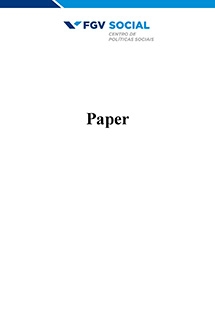
Distributive Effects of Brazilian Structural Reforms - Camargo, José Márcio, Neri, Marcelo Cortes
Sobre o paper:
This paper aims at measuring the evolution of income distribution and its determinants during the period of economic reforms. The paper is divided in two parts: the first and main part of the paper explores long-run relations between reforms and income distribution using standard decomposition techniques. The second part explores these relations at a higher frequency. The main empirical strategy pursued in the long-run part of the paper is to establish comparisons between reform related institutional characteristics and income distribution aspects at different points in time. The contrasts between the picturing before and after reforms allowed for tentative interpretations of causal relations between the reforms and the distributive outcomes. This part uses National Household Surveys (PNAD) for the years of 1976, 1985, 1990, 1993 and 1997. In order to set key dates in terms of reform implementation, we used indexes of institutional reforms. The two main institutional changes observed in the Brazilian case were the opening of the economy and stabilization. The two turning points identified in the implementation of reforms in Brazil were 1990 and 1994. The second part of the paper explores PME1 monthly household surveys to extract relations between movements of distributive variables, on the one hand, and economic reforms and macroeconomic fluctuations, on the other. It qualifies the effects of the 1994 stabilization on income distribution. First, it takes advantage of the higher degrees of freedom provided by PME in comparison with PNAD to choose dates before and after stabilization for comparing income distribution. For instance, PME allows to measure the moment previous to the launching of the stabilization plan and compare it with the end of 1998, incorporating the effects of the adverse external shocks that hit recently the Brazilian economy. Second, the fact that PME follows the same individuals across short periods of time allows to qualify the nature of the changes observed in inequality. In particular, the longitudinal aspect of PME allows to disentangle the effects of lower inflation rates on the temporal variability of earnings from those exerted on stricto sensu inequality measures (and its between groups and within groups components). The main result found is that post-stabilization fall of inequality measures is 2 to 4 times higher on a monthly basis (traditionally used in Brazil) than when one uses mean earnings across four months. Another way of looking at these effects of stabilization on inequality measures is to note that most of the fall of the inequality measures is attributed to the within groups component in the monthly inequality measures. Overall, the main point here is that most of the monthly earnings inequality fall observed after stabilization may be credited to a reduction of earnings volatility and not to a fall in permanent earnings inequality.




